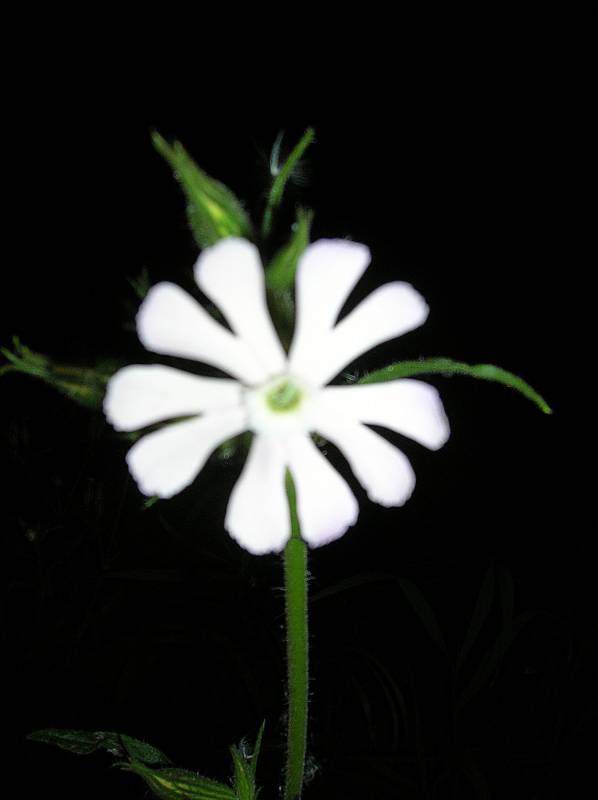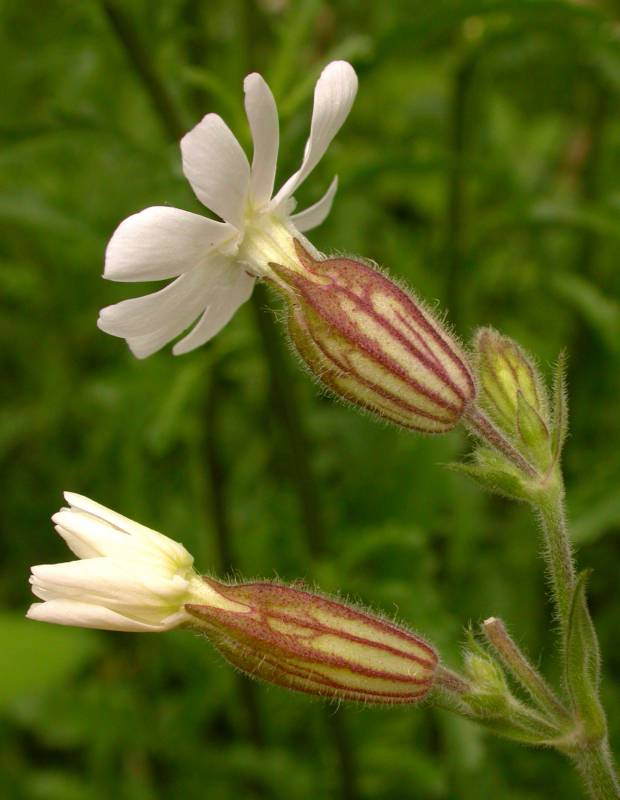Silene noctiflora
Silene latifolia
night-flowering catchfly
white campion, evening catchfly
Leaves opposite, ovate-lanceolate to elliptic-oblanceolate, 5-12 cm. long and up to 4 cm. broad, the lower ones long-petiolate, the upper sub-sessile.
Basal leaves petiolate, lanceolate to oblanceolate, up to 10 cm. long and 2 cm. broad;
cauline leaves 5-9 pairs, slightly reduced upward and becoming sessile.
Flowers few to several in an open inflorescence, the pedicels 3-30 mm. long;
calyx 5u00e2u20acu201clobed, tubular, 15 mm. long at flowering, much enlarged in fruit, 10-nerved, the lobes lance-linear, 5-9 mm. long;
petals 5, white to pinkish, glabrous, the claw 12-25 mm. long, auriculate above, the blade 7-10 mm. long, bi-lobed less than half the length;
blade appendages 2, 0.5-1.5 mm. long and broad;
stamens 10;
styles 3. Flowers open at dusk.
Flowers several in an open, spreading, leafy-bracteate inflorescence;
calyx 15-20 mm. long and tubular, the 5 lobes narrow; the calyx of the pistillate flowers inflated, 20-nerved;
corolla white;
claw of the petals equaling the calyx, broadened and auriculate at the junction with the blade; the blade 7-10 mm. long, narrowly obovate, deeply lobed, with 2 small, triangular appendages;
styles 5;
stamens 10, fused at the base, forming a tube.
Capsule 3-celled.
Capsule 1-celled, ovoid, opening by 5 bifid, spreading valves.
Silene noctiflora
Silene latifolia
- Local floras:
BC,
CA,
OR,
WA
- Local Web sites:
CalFlora,
CalPhotos,
Flora NW,
PNW Herbaria
WildflowerSearch
iNaturalist (observations)
USDA Plants Database
- LBJ Wildflower Center
- SEINet
- Plants of the World Online
- Encyclopedia of Life
- Wikipedia
- Google Image Search
- Local floras:
BC,
CA,
OR,
WA
- Local Web sites:
CalFlora,
CalPhotos,
Flora NW,
PNW Herbaria
WildflowerSearch
iNaturalist (observations)
USDA Plants Database
- LBJ Wildflower Center
- SEINet
- Plants of the World Online
- Encyclopedia of Life
- Wikipedia
- Google Image Search



